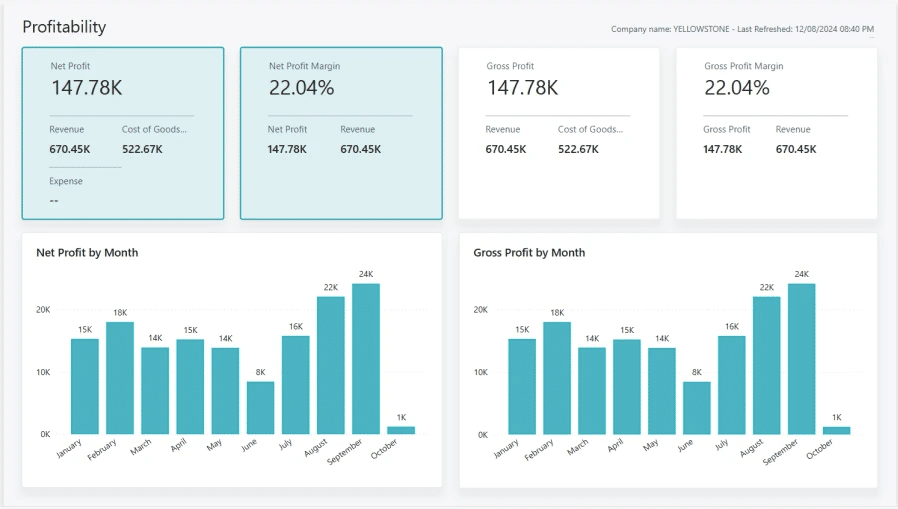Microsoft has recently acquired the intellectual property rights for our Gold Power BI Report Packs. This partnership is designed to equip your business with the tools to make informed decisions and seize new opportunities using embedded Power BI solutions.
With the release of embedded Power BI Reports in Business Central as part of the 2024 Release Wave 2, it’s important to understand how these changes impact our existing report pack. Further learn how your organisation can benefit from the enhanced reporting capabilities that this acquisition brings for you.
What’s Next with Fenwick Gold for Power BI
While our Power BI Apps won’t be removed immediately, they will no longer receive consistent updates. The product will enter a “caretaker” phase. This means our focus will shift to supporting our current clients who continue to use these tools and resolving any bugs that may arise. While we recommend transitioning to Microsoft’s Embedded Power BI Reports, there is some caveats to this which will discuss further.
Same Data, New Look
From a data perspective, not much will change in terms of what is pulled from the system. Both Microsoft’s Embedded Reports and our existing reports pull from the same data source and utilise similar semantic model configurations. This ensures the continuity in the information presented and allows you to easily compare the two as they should display the same figures.
The biggest change you will notice is the design change with the new Microsoft reports. This is aimed at providing a refreshed look and updated user interface that fits into Business Central as an embedded report. Adapting to the new design scheme will be a focal point as users transition.
Moving Forward
A key challenge for you is transitioning to Microsoft’s new report suite is the absence of an automatic method to transfer reports from the Fenwick Report Packs.
Custom reports you have built in our report pack will need to be rebuilt in the Microsoft workspace. This should be fairly straightforward ensuring you copy the same visualisation and fields. The inbuilt theme for Microsoft embedded reports ensures consistency in appearance. With the same semantic models used across both our report pack and Microsoft’s, your data should be the same.
Where you have changed the semantic model, you may run into a challenge. While Microsoft recently introduced a feature to Edit Data Models in the Power BI Service, these reports are unfortunately locked down for the phase one release. While it is unknown if these will be unlocked in future, this is the ideal approach to adding different data to these reports.
Moving forward, you will need to create new reports in the Microsoft Embedded Power BI service. Our recommendation is to slowly move yourself to these new reports. Over time, all your new reports should be built in the Microsoft semantic models. This approach ensures that you aren’t caught off guard when our reports are no longer available.
Starting fresh with Microsoft’s tools will guarantee that reporting capabilities remain intact as the transition progresses. These reports will keep receiving updates that add new standard pages, metrics, and data sources.
Looking Ahead
Transitioning to Microsoft’s Embedded Power BI Reports represents a change, offering new features that improve reporting and simplify workflows. If you are still using Fenwick’s Power BI Apps, this is an ideal time to start preparing for the future. By moving to Microsoft’s reporting tools, you can continue accessing the same trusted data while benefiting from improved accessibility and functionality.
We are here to assist you throughout this transition and will provide ongoing guidance to help manage the process. Lastly, if your business is considering Microsoft’s Embedded Power BI Reports or need support with the transition, our team is available to offer assistance and customised solutions.









